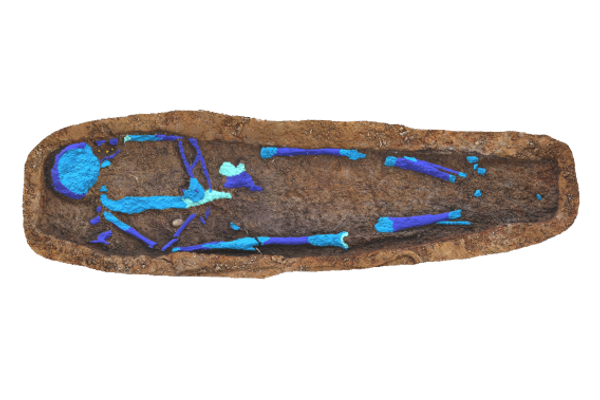Numbers Instead of Names on the Forgotten Graves of Asylum Patients
 Letchworth Village cemetery in Rockland County, New York (all photographs by the author)
Letchworth Village cemetery in Rockland County, New York (all photographs by the author)
Out of a combination of shame and state bureaucracy, the grave markers for thousands of patients who died in American mental asylums are marked with numbers instead of names, if anything at all. When the institutional style of treatment for the mentally and physically ill was abandoned in the late 20th century, these cemeteries were likewise left to ruin.
Last week in the New York Times, Dan Barry wrote that some 55,000 patients are estimated to be buried in anonymous graves in New York alone. His story focused on the abandoned Willard State Psychiatric Hospital in Willard, New York, where for three years a group has rallied to get a memorial with names for the around 5,800 people buried in its cemetery. However, old confidentiality laws that allowed anonymity for patients, often at the request of families who were private about having one of their own in an asylum, prevent the sharing of these names. The Willard Cemetery Memorial Project is now working to get families involved, as well recognition for those buried whose presence is recorded knowledge, but because of restrictions cannot be named.
The Willard asylum, which got recent attention when photographer Jon Crispin captured the contents of suitcases found forgotten in a locked attic, is similar to many of these institutions in that it was a closed, self-sufficient place. Unlike the hospitals of the 19th century, these rural asylums were meant to be a more humane option for treatment with plenty of space and recreation. However, overcrowding and mistreatment topped by a struggle with funding ended the system.
 Recently, Atlas Obscura explored another of these cemeteries of numbers at Letchworth Village in Rockland County, New York. Like Willard, the graves are marked with only numbers. However, a large, recently-installed granite monument at the entrance paired with some benches states in bold letters: “Those Who Shall Not Be Forgotten.”
Recently, Atlas Obscura explored another of these cemeteries of numbers at Letchworth Village in Rockland County, New York. Like Willard, the graves are marked with only numbers. However, a large, recently-installed granite monument at the entrance paired with some benches states in bold letters: “Those Who Shall Not Be Forgotten.”
On a plaque it lists hundreds of names, some of the estimated 1,000 buried on the grounds. The Letchworth Village cemetery was used from 1917 to 1967, and although there are a few traditional tombstones purchased by families, most all the dead are remembered just with a T-shaped steel cross anchored by cement.
The Letchworth Village cemetery isn’t easy to find. After parking by a small sign on Call Hollow Road a small distance from the sprawling ruins of the abandoned asylum itself, we walked down a gravel road where trash was dumped on either side. As we approached, ribbons and shreds of fabric were knotted around branches hanging above a small creek. Then we were met with the startling sight of the hundreds of metal markers. Some seemed newly repainted silver, but most were rusted and weathered. Some were missing, possibly scrapped or stolen (good luck finding grave number 666).
Aside from the dead leaves from the autumn trees crunching beneath our feet, there was a heavy silence. Letchworth Village, like Willard, was intended to be a place of peace. Instead its patient population, which included many children, ended up subject to abuse and was even used for testing the polio vaccine. And in the forgotten cemetery are the stark numbers that for some of these patients are the only reminder of their existence.
Below are more photographs from the abandoned Letchworth Village and its cemetery.







Old toy in one of the abandoned Letchworth Village buildings

Dead butterfly in a sink
 The asylum’s morgue
The asylum’s morgue
 Pews in the institution’s synagogue
Pews in the institution’s synagogue

 Hydrotherapy baths
Hydrotherapy baths









All photographs by the author.













Follow us on Twitter to get the latest on the world's hidden wonders.
Like us on Facebook to get the latest on the world's hidden wonders.
Follow us on Twitter Like us on Facebook